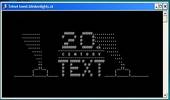Ever since humans began to experiment with self-made tools, civilizations throughout the course of recorded history have gradually developed various forms of technology to help make their lives easier and more efficient. Our humble beginnings with simple tools, however, have grown into something much more over the past few thousand years: We’ve eventually worked our way up to developing incredible technologies that have launched us into space and connected us together like never before.
 cc licensed flickr photo shared by digitpedia
cc licensed flickr photo shared by digitpedia
Some of our greatest technological milestones have involved “gadgets” that have improved our lives and astounded us simultaneously. Since a complete list of gadget-related technological milestones is probably very extensive, here’s a list of the top five gadgets throughout history.
5. Antikythera Mechanism
If you’ve never heard of this or even have trouble pronouncing “Antikythera,” don’t feel out of the loop: The only one ever discovered was built in either late second century BC or early first century BC. What makes the mechanism so incredible and worth mentioning is that it was far ahead of its time. When a disoriented crew of sponge divers discovered it in 1901 amongst an ancient shipwreck off the coast of the Greek island Antikythera, they considered that it was a lump of corroded bronze and wood. Years later, it was found to be a mechanism with precisely machined gears.
After decades of study, researchers determined it was a crank-powered astronomical calculator. The dials of the mechanism designated – among other things – the 365-day Sothic Egyptian calendar, the Greek Zodiac, sun and moon positions, the date, and more. While these functions are commonplace in modern technology, what makes the Antikythera Mechanism truly incredible and noteworthy is that it was not only one of the first true “gadgets” in history, but also one of the earliest known ancestors of the modern computer.
4. Cameras
Although most of us today are able to easily snap a picture at a moment’s notice with a handheld device, it wasn’t always this way. The first camera made its debut thousands of years ago in the form of a pinhole camera, a device which would project an inverted image when light was passed through a small hole. This eventually developed into the “camera obscura,” which utilized a similar effect.
It wasn’t until 1839, however, when the first true camera – the daguerreotype – came around publicly. Cameras continued to evolve and improve, and by the turn of the century, many consumers could purchase them. Photography continued to make leaps and bounds during the twentieth century, with digital cameras making their debut in the 1970s. Today, we’re able to take photographs and film events with incredibly small devices.
3. Telephones
In the late nineteenth century, the most efficient form of communication was the telegraph. Alexander Graham Bell, however, had a slightly different perspective: What if sounds could be carried over wires? He worked independently on his telephone, making various leaps and bounds along the way. Eventually, Bell was granted patents for the telephone.
Since then, the telephone has made numerous improvements. We’ve gone from using landlines to talking amongst each other wirelessly from any place in the world.
2. Computers
Although the title of “first computer” usually goes to devices such as the aforementioned Antikythera Mechanism, computers with integrated circuits as we know them today didn’t come around until the 1950s. Before that, “computers” were essentially mechanical calculators; some of which could even be programmed.
During the 50s and 60s, computer programming saw its beginnings through the FORTRAN Computer Programming Language, the first form of the Internet came into shape, the floppy disc was developed, and the first known video game to be played at multiple computer installations – “Spacewar” – was created. Eventually, International Business Machines (IBM) introduced the prototype to world's first personal computer SCAMP (Special Computer APL Machine Portable) in 1973 (as dubbed by the PC Magazine in 1983), followed shortly thereafter by other computers such as the Apple I. Over time, consumer computers became increasingly advanced, resulting in the incredible multi-featured machines we use today.
1. Smartphones
Since it combines all of the previous gadgets and more, it’s not difficult to see why the smartphone holds the #1 spot on this list. Modern smartphones have allowed us to not only call people from nearly any location, but also browse the Internet, check e-mail, play games, and much more; all on a single handheld device.

Some of our greatest technological milestones have involved “gadgets” that have improved our lives and astounded us simultaneously. Since a complete list of gadget-related technological milestones is probably very extensive, here’s a list of the top five gadgets throughout history.
5. Antikythera Mechanism
If you’ve never heard of this or even have trouble pronouncing “Antikythera,” don’t feel out of the loop: The only one ever discovered was built in either late second century BC or early first century BC. What makes the mechanism so incredible and worth mentioning is that it was far ahead of its time. When a disoriented crew of sponge divers discovered it in 1901 amongst an ancient shipwreck off the coast of the Greek island Antikythera, they considered that it was a lump of corroded bronze and wood. Years later, it was found to be a mechanism with precisely machined gears.
After decades of study, researchers determined it was a crank-powered astronomical calculator. The dials of the mechanism designated – among other things – the 365-day Sothic Egyptian calendar, the Greek Zodiac, sun and moon positions, the date, and more. While these functions are commonplace in modern technology, what makes the Antikythera Mechanism truly incredible and noteworthy is that it was not only one of the first true “gadgets” in history, but also one of the earliest known ancestors of the modern computer.
4. Cameras
Although most of us today are able to easily snap a picture at a moment’s notice with a handheld device, it wasn’t always this way. The first camera made its debut thousands of years ago in the form of a pinhole camera, a device which would project an inverted image when light was passed through a small hole. This eventually developed into the “camera obscura,” which utilized a similar effect.
It wasn’t until 1839, however, when the first true camera – the daguerreotype – came around publicly. Cameras continued to evolve and improve, and by the turn of the century, many consumers could purchase them. Photography continued to make leaps and bounds during the twentieth century, with digital cameras making their debut in the 1970s. Today, we’re able to take photographs and film events with incredibly small devices.
3. Telephones
In the late nineteenth century, the most efficient form of communication was the telegraph. Alexander Graham Bell, however, had a slightly different perspective: What if sounds could be carried over wires? He worked independently on his telephone, making various leaps and bounds along the way. Eventually, Bell was granted patents for the telephone.
Since then, the telephone has made numerous improvements. We’ve gone from using landlines to talking amongst each other wirelessly from any place in the world.
2. Computers
Although the title of “first computer” usually goes to devices such as the aforementioned Antikythera Mechanism, computers with integrated circuits as we know them today didn’t come around until the 1950s. Before that, “computers” were essentially mechanical calculators; some of which could even be programmed.
During the 50s and 60s, computer programming saw its beginnings through the FORTRAN Computer Programming Language, the first form of the Internet came into shape, the floppy disc was developed, and the first known video game to be played at multiple computer installations – “Spacewar” – was created. Eventually, International Business Machines (IBM) introduced the prototype to world's first personal computer SCAMP (Special Computer APL Machine Portable) in 1973 (as dubbed by the PC Magazine in 1983), followed shortly thereafter by other computers such as the Apple I. Over time, consumer computers became increasingly advanced, resulting in the incredible multi-featured machines we use today.
1. Smartphones
Since it combines all of the previous gadgets and more, it’s not difficult to see why the smartphone holds the #1 spot on this list. Modern smartphones have allowed us to not only call people from nearly any location, but also browse the Internet, check e-mail, play games, and much more; all on a single handheld device.

 About
About



